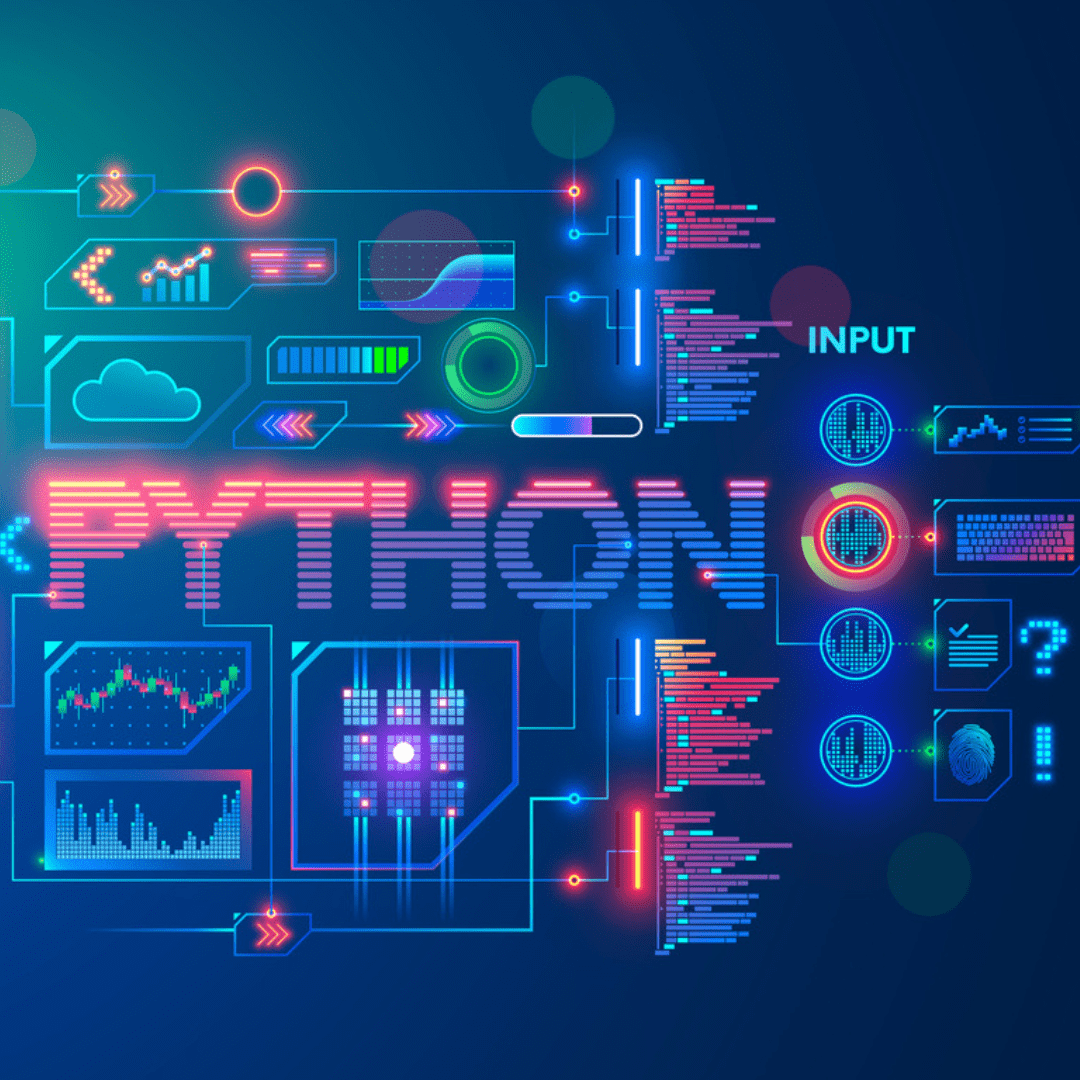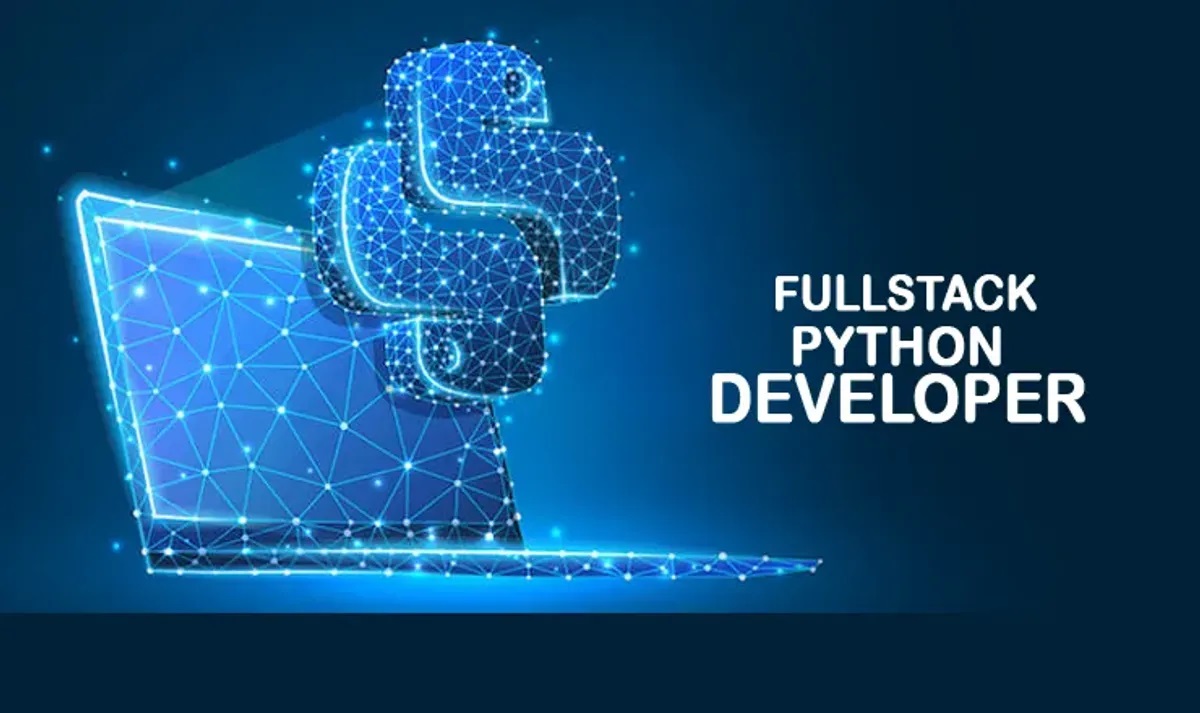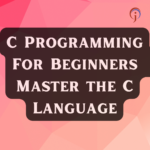
full stack python training in vizag
Learn to Build, Deploy and Operate Python Applications
You’re knee deep in learning Python programming. The syntax is starting to make sense. The first few ahh-ha! moments hit you as you learn to use conditional statements, for loops and classes while coding with the open source libraries that make Python such an amazing programming ecosystem.
Now you want to take your initial Python knowledge and make something real, like a web application to show off to friends or sell as a service to customers. python training in vizag .That’s where Full Stack Python comes in. You have come to the right place to learn everything you need to create, deploy and operate Python-powered applications.
Full Stack Python is an open source book that explains technical concepts in plain language. Read everything online for free or purchase the Supporter’s Edition for nicely-formatted ebook (PDF, EPUB, MOBI) versions. python course in vizag This guide branches out on topic because your learning requirements depend on what you’re working on. Choose a topic from the links below or view the full table of contents to see even more subjects you can learn.

full stack python training in vizag
What do you need to learn first?
1. Introduction
Learning Programming
Learning to program is about understanding how to translate thoughts into source code that can be executed on computers to achieve one or more goals.
There are many steps in learning how to program, including
- setting up a development environment
- selecting a programming language, of which Python is just one of many amazing ecosystems that you can decide to use
- understanding the syntax and commands for the language
- writing code in the language, often using pre-existing code libraries and frameworks
- executing the program
- debugging errors and testing for unexpected results
- deploying an application so it can run for intended users
How should I learn programming?
There are several schools of thought on how a person should start learning to program. python training institutes in vizag One school of thought is that a lower-level programming language such as Assembly or C are the most appropriate languages to start with because they force new developers to write their own data structures, learn about pointers and generally work their way through the hard problems in computer science.
There’s certainly wisdom in this “low-level first” philosophy because it forces a beginner to gain a strong foundation before moving on to higher level topics such as web and mobile application development. This philosophy is the one most commonly used in university computer science programs.
The atomic units of progress in the “low-level first” method of learning are
- aspects of programming language understood (type systems, syntax)
- number of data structures coded and able to be used (stacks, queues)
- algorithms in a developer’s toolbelt (quicksort, binary search)
full stack python training in vizag
Should I learn Python first?
Python is good choice in the project-based approach because of the extensive availability of free and low cost introductory resources, many of which provide example projects to build upon.
Note that this question of whether or not Python is a good first language for an aspiring programmer is highly subjective and these approaches are not mutually exclusive. python training institutes in visakhapatnam Python is also widely taught in universities to explain the fundamental concepts in computer science, which is in line with the “low-level first” philosophy than the projects-first method.
In a nutshell, whether Python is the right first programming language to learn is up to your own learning style and what feels right. If Ruby or Java seem like they are easier to learn than Python, go for those languages. Programming languages, and the ecosystems around them, are human-made constructs.best python training in vizag Find one that appears to match your personal style and give it a try, knowing that whatever you choose you’ll need to put in many long days and nights to really get comfortable as a software developer.
full stack python training in vizag
The Python Language
Python Programming Language
The Python programming language is an open source, widely-used tool for creating software applications.
What is Python used for?
Python is often used to build and deploy web applications and web APIs. Python can also analyze and visualize data and test software, even if the software being tested was not written in Python.
Language concepts
Python has several useful programming language concepts that are less frequently found in other languages. These concepts include:
- generators
- comprehensions
- application dependency handling via the built-in venv (as of Python 3.3) and pip (as of Python 3.4) commands
Generators
Generators are a Python core language construct that allow a function’s return value to behave as an iterator. A generator can allow more efficient memory usage by allocating and deallocating memory during the context of a large number of iterations. Generators are defined in PEP255 and included in the language as of Python 2.2 in 2001.
Comprehensions
Comprehensions are a Python language construct for concisely creating data in lists, dictionaries and sets. List comprehensions are included in Python 2 while dictionary and set comprehensions were introduced to the language in Python 3.
Why are comprehensions important?
Comprehensions are a more clear syntax for populating conditional data in the core Python data structures. Creating data without comprehensions often involves nested loops with conditionals that can be difficult for code readers to properly evaluate.
Example comprehensions code
List comprehension:
>>> double_digit_evens = [e*2 for e in range(5, 50)]
>>> double_digit_evens
[10, 12, 14, 16, 18, 20, 22, 24, 26, 28, 30, 32, 34, 36, 38, 40, 42, 44, 46, 48, 50, 52, 54, 56, 58, 60, 62, 64, 66, 68, 70, 72, 74, 76, 78, 80, 82, 84, 86, 88, 90, 92, 94, 96, 98]
Set comprehension:
>>> double_digit_odds = {e*2+1 for e in range(5, 50)}
{11, 13, 15, 17, 19, 21, 23, 25, 27, 29, 31, 33, 35, 37, 39, 41, 43, 45, 47, 49, 51, 53, 55, 57, 59, 61, 63, 65, 67, 69, 71, 73, 75, 77, 79, 81, 83, 85, 87, 89, 91, 93, 95, 97, 99}
Dictionary comprehension:
>>> {e: e*10 for e in range(1, 11)}
{1: 10, 2: 20, 3: 30, 4: 40, 5: 50, 6: 60, 7: 70, 8: 80, 9: 90, 10: 100}
General Python language resources
- Python Module of the Week is a tour through the Python standard library.
- A Python interpreter written in Python is incredibly meta but really useful for wrapping your head around some of the lower level stuff going on in the language.
- A few things to remember while coding in Python is a nice collection of good practices to use while building programs with the language.
- Python internals: adding a new statement to Python
- Python tricks that you can’t live without is a slideshow by Audrey Roy that goes over code readability, linting, dependency isolation, and other good Python practices.
- Python innards introduction explains how some of Python’s internal execution happens.
- What is a metaclass in Python is one of the best Stack Overflow answers about Python.
- Armin Roacher presented things you didn’t know about Python at PyCon South Africa in 2012.
Python ecosystem resources
There’s an entire page on best Python resources with links but the following resources are a better fit for when you’re past the very beginner topics.
- The Python Subreddit rolls up great Python links and has an active community ready to answer questions from beginners and advanced Python developers alike.
- The blog Free Python Tips provides posts on Python topics as well as news for the Python ecosystem.
- Python Books is a collection of freely available books on Python, Django, and data analysis.
- Python IAQ: Infrequently Asked Questions is a list of quirky queries on rare Python features and why certain syntax was or was not built into the language.
- A practical introduction to Functional Programming for Python coders is a good starter for developers looking to learn the functional programming paradigm side of the language.
- Getting Started with the Python Internals takes a slice of the huge CPython codebase and deconstructs some of it to see what we can learn about how Python itself is built.
Why Use Python?
Why Use Python?
Python’s expansive library of open source data analysis tools, web frameworks, and testing instruments make its ecosystem one of the largest out of any programming community.
Python is an accessible language for new programmers because the community provides many introductory resources. The language is also widely taught in universities and used for working with beginner-friendly devices such as the Raspberry Pi.

Python’s programming language popularity
Several programming language popularity rankings exist. While it’s possible to criticize that these guides are not exact, every ranking shows Python as a top programming language within the top ten, if not the top five of all languages.
The IEEE ranked Python as the #1 programming language in 2019, which continued its hot streak after ranking it #1 in 2018 and 2017. RedMonk’s June 2019 ranking had Python at #3, which held consistent from previous years’ rankings in 2018 and 2017.
Stack Overflow’s community-created question and answer data confirms the incredible growth of the Python ecosystem and tries to determine why it growing so quickly with their own analysis. In the 2020 Stack Overflow developer survey the data indicated that Python was the fastest growing major programming language and that there is a close alignment between the languages and tools that developers choose to learn and the usage in developers’ professional work.
The TIOBE Index a long-running language ranking, has Python moving up the charts to #3, climbing from #8 just a few years ago.
The PopularitY of Programming Language (PYPL), based on leading indicators from Google Trends search keyword analysis, shows Python at #1.
GitHut, a visualization of GitHub language popularity, pegs Python at #3 overall.
These rankings provide a rough measure for language popularity. They are not intended as a precise measurement tool to determine exactly how many developers are using a language. However, the aggregate view shows that Python remains a stable programming language with a growing ecosystem.
Why does the choice of programming language matter?
Programming languages have unique ecosystems, cultures and philosophies built around them. You will find friction with a community and difficulty in learning if your approach to programming varies from the philosophy of the programming language you’ve selected.
Python’s culture values open source software, community involvement with local, national and international events and teaching to new programmers. If those values are also important to you and/or your organization then Python may be a good fit.
The philosophy for Python is so strongly held that it’s even embedded in the language as shown when the interpreter executes “import this” and displays The Zen of Python.
>>> import this
The Zen of Python, by Tim Peters
Beautiful is better than ugly.
Explicit is better than implicit.
Simple is better than complex.
Complex is better than complicated.
Flat is better than nested.
Sparse is better than dense.
Readability counts.
Special cases aren't special enough to break the rules.
Although practicality beats purity.
Errors should never pass silently.
Unless explicitly silenced.
In the face of ambiguity, refuse the temptation to guess.
There should be one-- and preferably only one --obvious way to do it.
Although that way may not be obvious at first unless you're Dutch.
Now is better than never.
Although never is often better than *right* now.
If the implementation is hard to explain, it's a bad idea.
If the implementation is easy to explain, it may be a good idea.
Namespaces are one honking great idea -- let's do more of those!
More perspectives on using Python
Programming language rankings and the philosophy behind a language provide solid initial data points for why you should learn Python. These resources also give perspectives on why people switched from other programming communities and why they advocate for Python as a primary language.
- How to argue for Python’s use explains that choosing a programming language can be complicated but that Python is a very good option for many use cases.
- Why I Push for Python gives one professor’s rationale for promoting Python to teach programming to undergraduates.
- If you’re wondering about the differences in Python’s dynamically typed system versus statically typed languages, be sure to read this thorough explanation of the topic.
- Python, Machine Learning, and Language Wars compares Python with R, MATLAB and Julia for data science work. While Python is great for deployment automation and web development, many non-developers are first introduced to the language and ecosystem while getting data analysis work done.
Python 2 or 3?
The Python programming language is almost finished with a long-term transition from version 2 to version 3.python coaching centres in vizag New programmers often have questions about which version they should learn. It can be confusing to hear that Python 3, which was originally released in 2008, is still not the default installation on some operating systems such as macOS. However, that situation is rapidly changing as the final version 2 release, Python 2.7, is approaching its end-of-life that is definitively scheduled for January 1, 2020.
The simple answer right now is: learn Python 3, specifically the latest version which as of October 2019 is Python 3.7. If for some reason you absolutely have to learn Python 2, for example because your employer is working on a bunch of legacy code, you will be able to transfer the majority of your knowledge from Python 2 right into Python 3. Likewise, you will still be able to read and write Python 2 code if you start with Python 3.
There are enough great resources out there that will teach you to code in version 3 without any prior version 2 experience. Python 3 is the future and you will not regret starting with the latest version of the programming language.
Visualizations and Projects
Since upgrading from Python 2 to 3 has been such a huge undertaking within the community, many projects have sprung up to make the transition easier.
- six is a 2/3 compatibility library that is a dependency for many popular Python projects to make it easier to support both Python 2 and 3 at the same time.
- Python 3 Readiness is a visualization of which most popular 360 libraries (by downloads) are ready to be used with Python 3.
Porting to Python 3 resources
Moving an existing codebase to Python 3 from 2 can be a daunting task, These resources were created by fellow developers who’ve previously gone through the process and have advice for making it less painful.
- Python 3 Porting is an entire book with details for how to upgrade your existing projects and libraries to Python 3.x.
- Moving from Python 2 to Python 3 is a PDF cheatsheet for porting your Python code.
- The official porting code to Python 3 page links to resources on porting Python code as well as underlying C implementations. There is also a quick reference for writting code with Python 2 and 3 compatibility.
- Upgrading to Python 3 with Zero Downtime supplies advice on transitioning a large existing Python 2 web application to Python 3. Their process involved upgrading dependencies, testing and deploying the new version before going back to clean up unnecessary code created by the transition.
Python 2 to 3 resources
The following resources will give you more context on how the community feels the transition from Python 2 to 3 is going, as well as why you should upgrade as soon as possible.
- Why should I use Python 3? is a detailed FAQ on important topics such as unicode support, iteration improvements and async upgrades provided by 3.x. There is also a great follow up post by the author titled A Rebuttal For Python 3 that counters some arguments made by other community members who are unhappy about various features in Python 3.
- Want to know all of the advantages and what’s changed in Python 3 compared to Python 2? There’s an official guide to Python 3 changes you’ll want to read.
- Python 3 is winning presents data and graphs from PyPI to show that at the current rate, by mid-2016 overall Python 3 library support will overtake Python 2 support.
- Python 3 Retrospective from the Benevolent Dictator for Life is a talk by Guido van Rossum on what is working, not working and still needs to be done before the changover can be considered complete.
Enterprise Python
One of the misconceptions around Python and other dynamically-typed languages is that they cannot be reliably used to build enterprise-grade software. However, almost all commercial and government enterprises already use Python in some capacity, either as glue code between disparate applications or to build the applications themselves.
What is enterprise software?
Enterprise software is built for the requirements of an organization rather than the needs of an individual. Software written for enterprises often needs to integrate with legacy systems, such as existing databases and non-web applications.python training centres in visakhapatnam There are often requirements to integrate with authentication systems such as the Lightweight Directory Access Protocol (LDAP) and Active Directory (AD).
Organizations develop enterprise software with numerous custom requirements to fit the specific needs of their operating model. Therefore the software development process often becomes far more complicated due to disparate factions within an organization vying for the software to handle their needs at the expense of other factions.
The complexity due to the many stakeholders involved in the building of enterprise software leads to large budgets and extreme scrutiny by non-technical members of an organization. Typically those non-technical people place irrational emphasis on the choice of programming language and frameworks when otherwise they should not make technical design decisions.
Why are there misconceptions about Python in enterprise environments?
Traditionally large organizations building enterprise software have used statically typed languages and platforms such as C++, C# and Java. Throughout the 1990s and early 2000s, large companies such as Microsoft, Sun Microsystems and Oracle marketed these languages as “enterprise grade”. The inherent message about other programming ecosystem was that they were not appropriate for CIOs’ difficult technical environments. Languages other than Java, C++ and C# (along with its broader .NET platform) were seen as risky and therefore not worthy of investment.
In addition, “scripting languages” such as Python, Perl and Ruby were not yet robust enough in the 1990s because their core standard libraries were still being developed. Frameworks such as Django, Flask and Rails (for Ruby) did not yet exist. The Web was just beginning and most enterprise applications were desktop apps built for Windows. Python simply wasn’t made for such environments.
Why is Python now appropriate for building enterprise software?
From the early 2000s through today the languages and ecosystems for many dynamically typed languages have greatly improved and often surpassed some aspects of other ecosystems. Python, Ruby and other previously derided languages now have vast, well-maintained open source ecosystems backed by both independent developers and large companies including Microsoft, IBM, Google, Facebook, Dropbox, Twilio and many, many others.
Python’s open source libraries, especially for web development and data analysis, are some of the best maintained and fully featured pieces of code for any language.
Meanwhile, some of the traditional enterprise software development languages such as Java have languished due to underinvestment by their major corporate backers. When Oracle purchased Sun Microsystems in 2009, there was a long lag time before Java was enhanced with new language features in Java 7. Oracle also bundles unwanted adware with the Java installation, whereas the Python community would never put up with such a situation because the language is open source and does not have a single corporate controller.



 Previous Post
Previous Post Next Post
Next Post